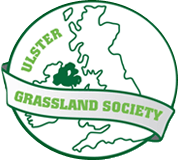Event Details
- Date: 20 Apr 2015
- Venue: The Egerton farm, Rosslea
Rosslea suckler beef and sheep farmer John Egerton hosted an extremely successful farm walk for members for the Ulster Grassland Society (UGS) earlier this week.
The event provided a unique opportunity for visitors to see at first hand the implementation of exceptionally high grassland management standards within a beef and sheep context.
The Egerton farm, which extends to 180 acres, is home to 80 suckler cows and a flock of 150 breeding ewes. The cows are split into autumn (45) and spring (35) groups. It is a totally closed unit with all calves brought through to beef or reared as replacement heifers.
“The autumn group calve during August and September, with their spring counterparts calving down between March and April,” said Egerton.
“And each is managed as a distinct and separate breeding unit. I will not let spring calving cows slip into the autumn batch, because they cannot be put back into calf, and vice versa. The splitting of the herd in this way cuts down the workload in the early months of the year, as the ewes lambing season coincides with the spring calving period.”
All the breeding animals are crossed with AI sires. Sexed straws are used on all replacement heifers and a selection of the older cows.
“I do not use a stock bull at all,” stressed Egerton.
“I will inspect all of the cows and heifers four times daily throughout the breeding season. I inseminate the cows myself. This approach ensures that I am using only proven genetics on the herd.”
Making optimal use of grass – both grazed and silage – is a key priority for John Egerton. The entire grazing area is laid out in paddocks, each approximately one acre in size.
The cows have access to the entire grassland acreage available to them in the early spring with the first cut silage area closed off at the beginning of April. The cows are then split into groups, each with access to eight paddocks.
“The general rule of thumb is three days eating and twenty one day growing for the main part of the grazing season,” said Egerton.
“Grass availability is monitored on a daily basis with surplus paddocks taken out for baled silage as required, thereby maximising grass quality. Approximately 10% of the grassland area on the farm is re-seeded every year. Regular soil testing is also carried out. This approach has allowed me to develop a strategic liming policy for the farm. Over the past six years, average soil pH values have risen from 5.2 to the current figure of around 6.0.”










